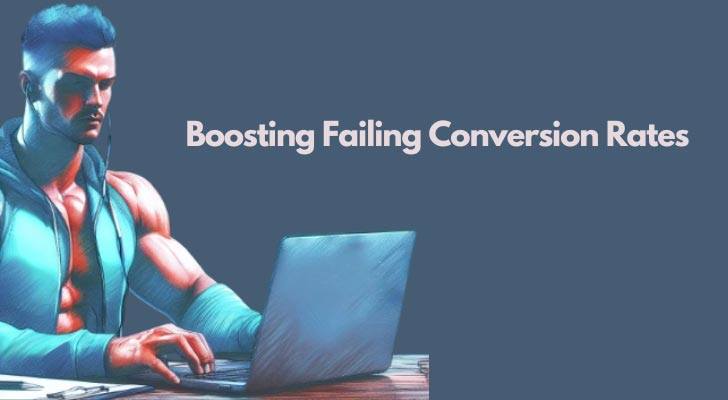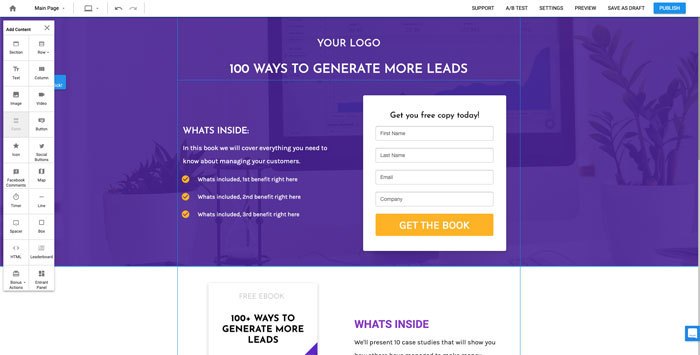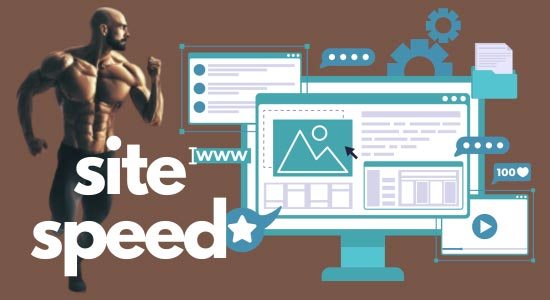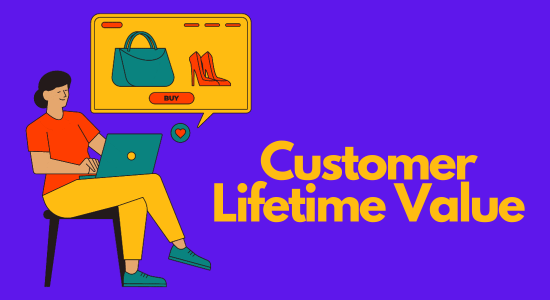You know the drill. You've poured time and money into creating an eye-catching website, drumming up social media hype, and crafting emails that you'd personally love to get. But then, crickets. Your conversion rates are still lower than a limbo bar at a beach party. Frustrating, isn't it?
The Reality Check
First, let's not pretend we're alone in this struggle. A 2020 study from Unbounce showed that the average conversion rate across industries hovers around a measly 4.1%. Not exactly numbers you want to write home about, huh? The bright side is, there's clearly room for improvement for all of us.

Know Your Metrics
So you've got sagging conversion rates and you're itching to turn things around. Hold your horses. Before you start randomly fixing things, you need a clear picture of what's going on.
For me, Google Analytics was the go-to tool for checking metrics like bounce rates, average session duration, and, of course, conversions. These numbers give you the starting line, and you can't run a race without knowing where to begin, can you?
Before going commando on your marketing strategies, figure out what exactly is going wrong. You can't fix something if you don't know what's broken, right?
- User Experience: People should feel like your site is a breeze to use.
- Page Load Time: Nobody wants to wait forever; in fact, a Google study found that 53% of mobile site visits are abandoned if the page takes longer than three seconds to load.
When I first started, my site looked slick but was complicated to navigate. A tool like Hotjar can show you heatmaps and user recordings, revealing where people spend most of their time and where they drop off. After seeing that people bounced from my landing page, I realized that it was cluttered and confusing.
Heatmaps and User Behavior: A Detective Story
To get a visual sense of where my website visitors were most active, I turned to Hotjar. The heatmaps offered a treasure trove of data. I found out that people were clicking on an image that wasn't even a clickable link. Talk about misleading! I promptly turned that image into a CTA (call-to-action) button, which helped improve click-through rates. This tool gives you a glimpse into how visitors behave, which is gold when you’re trying to pinpoint what’s not working.
Abandoned Carts: The Lonely Island
If you run an eCommerce site, there’s nothing more annoying than seeing a bunch of abandoned carts. I used a Shopify plugin that would send a follow-up email about the abandoned cart, and included a limited-time discount code as an extra push. It wasn’t a magic bullet, but it sure helped me figure out if price was the main issue for these near-misses.
Landing Pages: Your First Impression

Your landing page should be like that friend who makes everyone feel welcome at a party. If it’s not, you’ve got a problem. When I noticed that the bounce rate on my landing page was way too high, I decided to consult a copywriting expert. We revised the page to make the language more conversational and the CTAs more compelling.
User Feedback: Don't Be Shy, Just Ask
Collecting user feedback can provide direct insights into what people actually want. I added a simple, unobtrusive pop-up survey on my site using a tool like Qualaroo. It asked just one question: "Did you find what you were looking for?" I was genuinely surprised to find that many said 'No,' and some even offered suggestions for improvement. Real talk: sometimes you just have to go straight to the source.
Site Speed
I can’t stress enough how annoying slow page loading times can be for visitors. Google’s PageSpeed Insights helped me identify that some high-resolution images were slowing down my load time. Compressing the images fixed the issue and sped up the site.

Cutting Through the Noise
In a space where everyone is screaming for attention, you've got to make your voice distinct and clear. I found that simple, straightforward language works better than jargon that sounds like it was pulled from a college thesis. And interactive content? Always a winner. Polls, quizzes, or a short video can keep your visitors engaged.
I shifted my approach to focus on easy-to-understand, relatable language. I also added a quiz using Interact that would recommend products to the visitor based on their answers. Interactivity drove engagement, and my time-on-page metrics improved.
Revisiting Email Marketing
Let's not forget email. Sure, it might feel old-school, but it still works. According to a study by Litmus, for every $1 you spend on email marketing, you can expect an average return of $42. Not too shabby, right? Personalized subject lines, CTAs that don't beat around the bush, and relevant content can elevate your email game.
Email's far from dead. I used Mailchimp to segment my email list and tailor my messages. Believe me, a well-timed, relevant email can work wonders. After segmenting, I sent a series of three "How-to" emails to a particular list interested in learning more, and boom - a 20% increase in clicks and conversions.
Revisiting the Value of a Lead
A lot of marketers fall into the trap of thinking that more traffic automatically equals more conversions. In my own experience, I found that not all leads are created equal. For example, if I had 200 leads but only a 1% conversion rate, that's just 2 sales. But if I focused on higher-quality leads, even if the lead number dropped to 100 but had a conversion rate of 10%, I’d have 10 sales. Math doesn't lie, does it?
Retargeting the Engaged
Retargeting has been an absolute game-changer for me. According to a study by Criteo, retargeted customers are 70% more likely to complete a purchase compared to non-retargeted customers. That's huge! I used Facebook Pixel to track user behavior on my site and then served retargeted ads only to those who’d spent a significant amount of time browsing. This focus on quality over quantity resulted in higher engagement and ultimately better conversions.
Content Upgrades: Next-Level Engagement
Another strategy I used was offering content upgrades. Instead of a generic "Subscribe to Newsletter" CTA, I offered a free e-book or a detailed guide related to the blog post they were reading. This not only helped me acquire higher-quality email addresses but also led to a 30% increase in time spent on the website. More time spent usually equates to higher engagement, and in my book, that’s a quality lead.
Customer Lifetime Value (CLV): The Long Game

In the rush to get conversions, we often overlook the value a customer can bring over a longer period. According to a study by Bain & Company, increasing customer retention rates by 5% increases profits by 25% to 95%.
So I started focusing more on customer service and post-purchase engagement. This was done through thank-you emails, feedback requests, and even a loyalty program. The result? My repeat customer rate went from a mere 5% to a much healthier 20%.
Hyper-Personalization: Make Them Feel Special
The more personalized the user experience, the better the quality of your leads. A study by SmarterHQ found that 72% of consumers only engage with marketing messages that are customized to their specific interests.
I used tools like OptinMonster to create personalized pop-ups and messages based on user behavior, such as which pages they visited or how many times they’ve visited. And guess what? My conversion rates saw a significant boost.
Your conversion rate is a number, but the people clicking that "Buy Now" button are not just numbers—they've got wants, needs, and gripes. To be honest, I'd rather have 50 committed customers than 200 who bounce faster than a trampoline.
Instead of casting a wide net, I focused on quality leads. Using Facebook Pixel, I was able to target users who had already interacted with my site. Trust me, a little targeted retargeting ad spend can go a long way in getting quality leads.
Do A/B Testing But Don't Overdo It
We've all heard that A/B testing is the marketer's best friend. And it's true, mostly. But just like you shouldn't put all your eggs in one basket, don't put all your faith in A/B testing. Sometimes we get so caught up in tweaking every tiny detail that we lose sight of the bigger picture.
I swear by Optimizely for A/B testing; it's a tool that lets you easily set up different variations of your site to find what works best. But here’s a word to the wise: it's easy to get obsessed with tweaking. I found that I was sinking too much time into minor button changes when I should have been focusing on bigger issues like content and value proposition.
Time to Experiment
Change is as good as a holiday, they say. Don't be scared to swap out images, play around with your website layout, or change your tone in social media posts. I’ve had my fair share of changes that didn’t pan out, but some absolutely rocked my conversion rates. So it's worth a try, right?
Stagnation is the enemy. I decided to revamp the layout of my site using WordPress themes that focused on ease of use and clean aesthetics. I also got a bit adventurous with my social media strategy, throwing in some user-generated content and live Q&As. Some changes were a hit, others were a miss, but hey, that’s how you learn and grow, right?
How I "Finally" Make Over $7,000 Monthly Income
"The most valuable thing I've ever done!"
For years, I've had a passion for writing, sharing stories with the world. Parallel to that, I've spent a good part of my life in stock investing, learning the ropes and making wise decisions. Now, as I enjoy my semi-retired life, I find joy in blending these two worlds. By combining my financial experience with my writing skills, I aim to create content, hoping to inspire others.


Hey Josh, awesome post here. I’m planning to start an e-commerce site later on this year and the information helps to start me up a big deal. Look forward to your future posts. Kaju
Pretty good advice for me thanks. I Particularly agree about coupons I receive from super-market. If they are not for food I never usually buy they are never useful but thankfully they are very clever almost all the coupons are for food I often bought in the past few months. My question is, I want to start my own ecommerce store but I have no idea what kind of software can do that? I appreciate if you can recommend one I can take a look. Thanks.